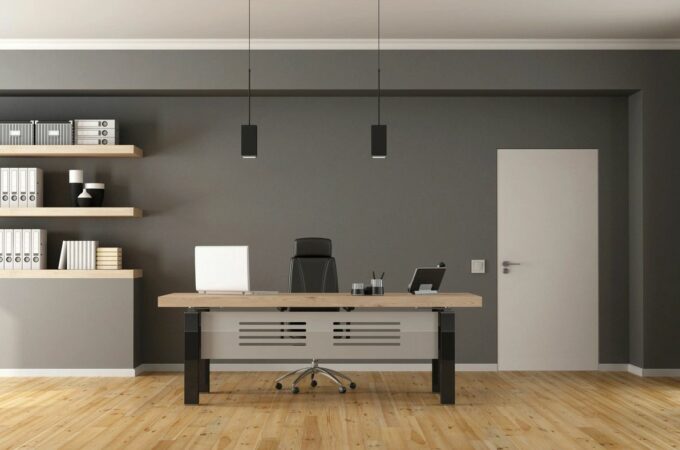
How Often Do Floors Need to be Refinished?
You want your office to look great. Right? Heavy traffic and inadequate care can lead to headaches when it comes to your once stylish hardwood floors. Hardwood flooring is a great added value to your office, but they need to be appropriately cared for and maintained to keep their value. Refinishing hardwood floors is an excellent way to freshen them up every few years and make them look brand new without having to replace the floor altogether.
When Do Hardwood Floors Need to be Refinished?
Every so often, hardwood floors need to be refinished depending on their thickness and age. It is generally acknowledged that the floors should be refinished every seven to ten years, depending on the width of the floor. Hardwood flooring that s only ¼ inches thick would have no flooring left if refinished.
If your hardwood floor has scratches, fading, or discoloration, that is an indicator that it might require refinishing. The older your hardwood flooring is in your office, the more critical it is to conduct proper hardwood maintenance. Furniture or rugs can hide minor imperfections, such as small scratches, severe damage will require more effort.
All hardwood flooring is different, and solid hardwood can be refinished more often than engineered hardwood because of its layered construction. When you come across come of these indicators, such as excessive dents and scratches, fading and discoloration from sunlight exposure, or water damage, it is time to investigate refinishing or replacing your hardwood floor.
Excessive Dents and Scratches
Dents and scratches on hardwood flooring are going to happen over time, especially with kids or pets. If your floors are covered in cuts and scrapes, it might be the perfect time to refinish the hardwood by removing the surface scratches that aren’t too deep in the wood by sanding and then staining the wood.
Fading and Discoloration from Sunlight Exposure
Sunlight shining directly on your hardwood will have a negative impact o the floors. If your hardwood is getting too much exposure to UV rays, it will begin to fade and become discolored. You can protect your floors from sunlight by blocking the direct rays with blinds or shades, but if your floor is already showing signs of fading and discoloration, then you should consider refinishing the hardwood to bring it back to its original color.
Water Damage
Over time the protective finish on the hardwood will wear off, and when this happens, your floors become vulnerable to water damage. If water spills and soaks into the wood immediately rather then staying on top, you need to refinish your floors. Another sign that your floors have water damage is if they are turning a grey color. Eventually, if left untreated, the floors will become black and need to be replaced entirely.
How to Refinish Your Hardwood Floors
Refinishing your hardwood floors is a time-consuming venture, and can end up being frustrating, you want to make sure it’s done correctly as not to cause any further damage to your floors. Here’s a list of what is involved when you decide to refinish hardwood floors yourself:
- Renting a professional sander, and a handheld sander for edges and corners
- Covering all air windows, vents and doorways with plastic to contain the dust
- Moving all furniture, pictures, curtains, etc. out of the room
- Cleaning the floor thoroughly before sanding begins
- Need to complete three swipes with the sander, starting from light grit, to medium sand, to fine sand
- Stuffing in dents and scratches with a screen
- Lots of clean-up and vacuuming afterward
After this work is completed, it is time to begin coating and staining the hardwood floor.
Refinishing Floors Isn’t Enough Sometimes
The choice to put hardwood floors in your office is a significant investment and the floors if adequately cared for will last a long time, but over time they do get discolored, scratched, and there’s the possibility of water damaged that can all be taken care of if your floors are refinished correctly. However, there are times when the floors need to be replaced entirely and these are the signs to be aware of:
- Gaps, loose boards, and boards moving
- Boards that have turned extraordinarily dark or black
- Deep gouges or scratches to go beyond the surface layer
- Boards that are warping
Most of this list can be avoided with preventive hardwood flooring care. Being pro-active in your attention when you notice something will help prevent expensive problems in the long run.
Recommended
-
5 Skin Care Trends: What Profe...April 10th, 2024
-
The Power Of Saying “No” W...March 22nd, 2024
-
Is It Time To Change Your Rela...March 20th, 2024
-
Resilience & Transformati...February 20th, 2024
-
Letting Go Of Trying Harder To...January 23rd, 2024















